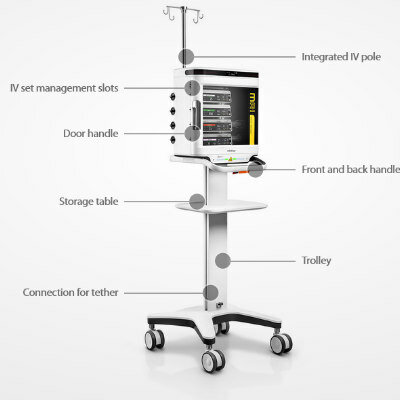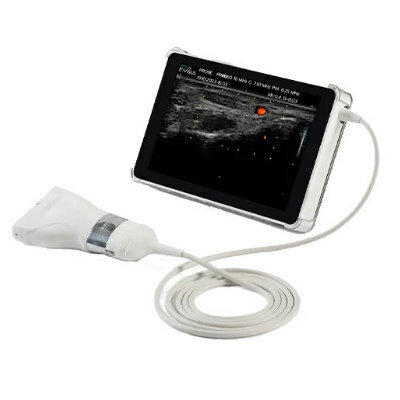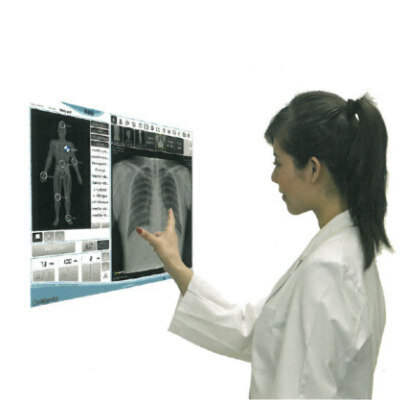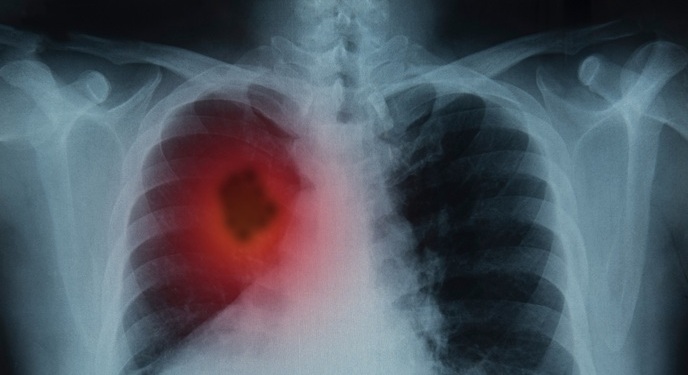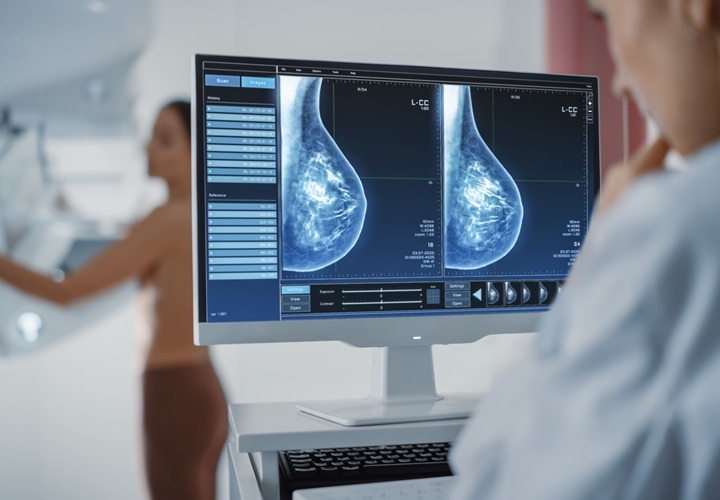Lung Ultrasound could be used as a safe and Effective Substitute for Chest X-Rays for the Diagnosis of Pneumonia in Children
|
By MedImaging International staff writers Posted on 26 Apr 2016 |

Image: Dr. James Tsung, MD, showcases a lung ultrasound display on a tablet (Photo courtesy of Mount Sinai Hospital).
The results of a randomized controlled trial in the pediatric emergency department of a leading medical school in the US suggest that lung ultrasound is highly effective, and safe, for diagnosing pneumonia in children, and could potentially be used as a substitute for standard chest X-Ray exams.
According to the World Health Organization (WHO) pneumonia is the leading cause of death in children worldwide. While chest X-Rays exams are currently the standard choice for diagnosis, the WHO estimates that 75% of the world’s population does not have access to radiography.
The results of the study were published in the March, 2016 issue of the journal Chest. The study included 191 children aged 0 to 21 years. The children were randomly assigned to receive either a lung ultrasound and if necessary also a chest X-ray, and a control group that underwent a chest X-ray followed by a lung ultrasound. The study was conducted by researchers at the Mount Sinai hospital Icahn School of Medicine (ISMMS; New York, NK, USA).
The researchers found that 38.8% less chest X-Rays were performed in the group that underwent an initial ultrasound exam, compared to no reduction in the control group. No pneumonia cases were missed and there was no increase in any other adverse events. The replacement of X-Ray exams by ultrasound resulted in overall cost savings of USD 9,200, and reduced the time the children spent in the emergency ward by an average of 26 minutes. The results suggest that lung ultrasound could become the best option for the diagnosis of pneumonia in children, although further research is required.
Dr. Tsung, associate professor at Mount Sinai, and leader of the research team, said, “Ultrasound is portable, cost-saving and safer for children than an X-ray because it does not expose them to radiation. Our study could have a profound impact in the developing world where access to radiography is limited. In the era of precision medicine, lung ultrasound may also be an ideal imaging option in children who are at higher risk for radiation-induced cancers or have received multiple radiographic or CT imaging studies.
Related Links:
Mount Sinai hospital Icahn School of Medicine
According to the World Health Organization (WHO) pneumonia is the leading cause of death in children worldwide. While chest X-Rays exams are currently the standard choice for diagnosis, the WHO estimates that 75% of the world’s population does not have access to radiography.
The results of the study were published in the March, 2016 issue of the journal Chest. The study included 191 children aged 0 to 21 years. The children were randomly assigned to receive either a lung ultrasound and if necessary also a chest X-ray, and a control group that underwent a chest X-ray followed by a lung ultrasound. The study was conducted by researchers at the Mount Sinai hospital Icahn School of Medicine (ISMMS; New York, NK, USA).
The researchers found that 38.8% less chest X-Rays were performed in the group that underwent an initial ultrasound exam, compared to no reduction in the control group. No pneumonia cases were missed and there was no increase in any other adverse events. The replacement of X-Ray exams by ultrasound resulted in overall cost savings of USD 9,200, and reduced the time the children spent in the emergency ward by an average of 26 minutes. The results suggest that lung ultrasound could become the best option for the diagnosis of pneumonia in children, although further research is required.
Dr. Tsung, associate professor at Mount Sinai, and leader of the research team, said, “Ultrasound is portable, cost-saving and safer for children than an X-ray because it does not expose them to radiation. Our study could have a profound impact in the developing world where access to radiography is limited. In the era of precision medicine, lung ultrasound may also be an ideal imaging option in children who are at higher risk for radiation-induced cancers or have received multiple radiographic or CT imaging studies.
Related Links:
Mount Sinai hospital Icahn School of Medicine
Latest Radiography News
- World's Largest Class Single Crystal Diamond Radiation Detector Opens New Possibilities for Diagnostic Imaging
- AI-Powered Imaging Technique Shows Promise in Evaluating Patients for PCI
- Higher Chest X-Ray Usage Catches Lung Cancer Earlier and Improves Survival
- AI-Powered Mammograms Predict Cardiovascular Risk
- Generative AI Model Significantly Reduces Chest X-Ray Reading Time
- AI-Powered Mammography Screening Boosts Cancer Detection in Single-Reader Settings
- Photon Counting Detectors Promise Fast Color X-Ray Images
- AI Can Flag Mammograms for Supplemental MRI
- 3D CT Imaging from Single X-Ray Projection Reduces Radiation Exposure
- AI Method Accurately Predicts Breast Cancer Risk by Analyzing Multiple Mammograms
- Printable Organic X-Ray Sensors Could Transform Treatment for Cancer Patients
- Highly Sensitive, Foldable Detector to Make X-Rays Safer
- Novel Breast Cancer Screening Technology Could Offer Superior Alternative to Mammogram
- Artificial Intelligence Accurately Predicts Breast Cancer Years Before Diagnosis
- AI-Powered Chest X-Ray Detects Pulmonary Nodules Three Years Before Lung Cancer Symptoms
- AI Model Identifies Vertebral Compression Fractures in Chest Radiographs
Channels
Radiography
view channel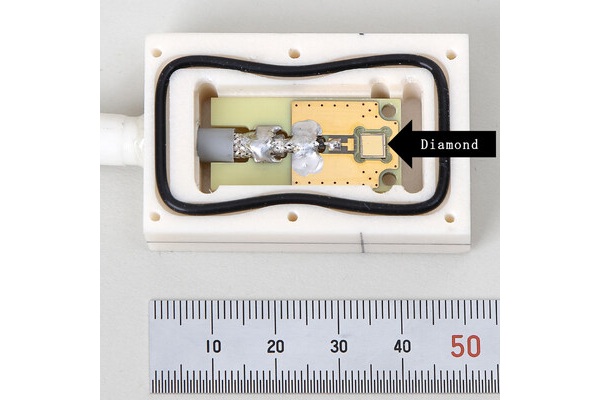
World's Largest Class Single Crystal Diamond Radiation Detector Opens New Possibilities for Diagnostic Imaging
Diamonds possess ideal physical properties for radiation detection, such as exceptional thermal and chemical stability along with a quick response time. Made of carbon with an atomic number of six, diamonds... Read more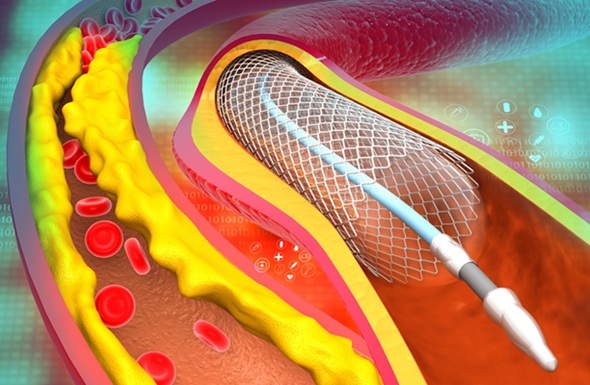
AI-Powered Imaging Technique Shows Promise in Evaluating Patients for PCI
Percutaneous coronary intervention (PCI), also known as coronary angioplasty, is a minimally invasive procedure where small metal tubes called stents are inserted into partially blocked coronary arteries... Read moreMRI
view channel
AI Tool Tracks Effectiveness of Multiple Sclerosis Treatments Using Brain MRI Scans
Multiple sclerosis (MS) is a condition in which the immune system attacks the brain and spinal cord, leading to impairments in movement, sensation, and cognition. Magnetic Resonance Imaging (MRI) markers... Read more
Ultra-Powerful MRI Scans Enable Life-Changing Surgery in Treatment-Resistant Epileptic Patients
Approximately 360,000 individuals in the UK suffer from focal epilepsy, a condition in which seizures spread from one part of the brain. Around a third of these patients experience persistent seizures... Read more
AI-Powered MRI Technology Improves Parkinson’s Diagnoses
Current research shows that the accuracy of diagnosing Parkinson’s disease typically ranges from 55% to 78% within the first five years of assessment. This is partly due to the similarities shared by Parkinson’s... Read more
Biparametric MRI Combined with AI Enhances Detection of Clinically Significant Prostate Cancer
Artificial intelligence (AI) technologies are transforming the way medical images are analyzed, offering unprecedented capabilities in quantitatively extracting features that go beyond traditional visual... Read moreNuclear Medicine
view channel
Novel PET Imaging Approach Offers Never-Before-Seen View of Neuroinflammation
COX-2, an enzyme that plays a key role in brain inflammation, can be significantly upregulated by inflammatory stimuli and neuroexcitation. Researchers suggest that COX-2 density in the brain could serve... Read more
Novel Radiotracer Identifies Biomarker for Triple-Negative Breast Cancer
Triple-negative breast cancer (TNBC), which represents 15-20% of all breast cancer cases, is one of the most aggressive subtypes, with a five-year survival rate of about 40%. Due to its significant heterogeneity... Read moreGeneral/Advanced Imaging
view channel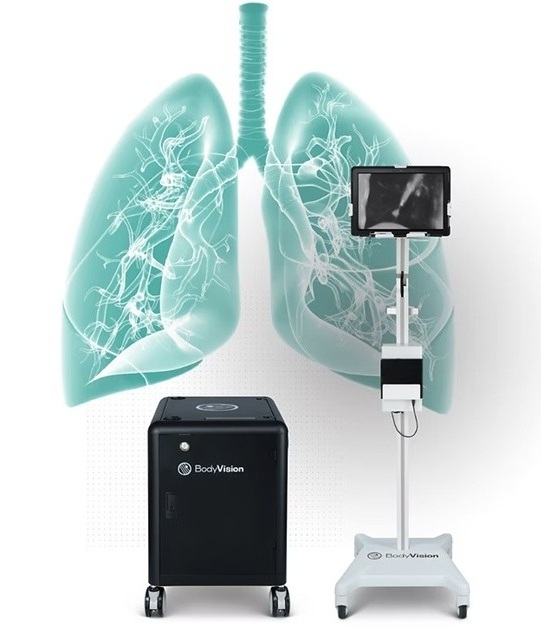
AI-Powered Imaging System Improves Lung Cancer Diagnosis
Given the need to detect lung cancer at earlier stages, there is an increasing need for a definitive diagnostic pathway for patients with suspicious pulmonary nodules. However, obtaining tissue samples... Read more
AI Model Significantly Enhances Low-Dose CT Capabilities
Lung cancer remains one of the most challenging diseases, making early diagnosis vital for effective treatment. Fortunately, advancements in artificial intelligence (AI) are revolutionizing lung cancer... Read moreImaging IT
view channel
New Google Cloud Medical Imaging Suite Makes Imaging Healthcare Data More Accessible
Medical imaging is a critical tool used to diagnose patients, and there are billions of medical images scanned globally each year. Imaging data accounts for about 90% of all healthcare data1 and, until... Read more
Global AI in Medical Diagnostics Market to Be Driven by Demand for Image Recognition in Radiology
The global artificial intelligence (AI) in medical diagnostics market is expanding with early disease detection being one of its key applications and image recognition becoming a compelling consumer proposition... Read moreIndustry News
view channel
GE HealthCare and NVIDIA Collaboration to Reimagine Diagnostic Imaging
GE HealthCare (Chicago, IL, USA) has entered into a collaboration with NVIDIA (Santa Clara, CA, USA), expanding the existing relationship between the two companies to focus on pioneering innovation in... Read more
Patient-Specific 3D-Printed Phantoms Transform CT Imaging
New research has highlighted how anatomically precise, patient-specific 3D-printed phantoms are proving to be scalable, cost-effective, and efficient tools in the development of new CT scan algorithms... Read more
Siemens and Sectra Collaborate on Enhancing Radiology Workflows
Siemens Healthineers (Forchheim, Germany) and Sectra (Linköping, Sweden) have entered into a collaboration aimed at enhancing radiologists' diagnostic capabilities and, in turn, improving patient care... Read more




